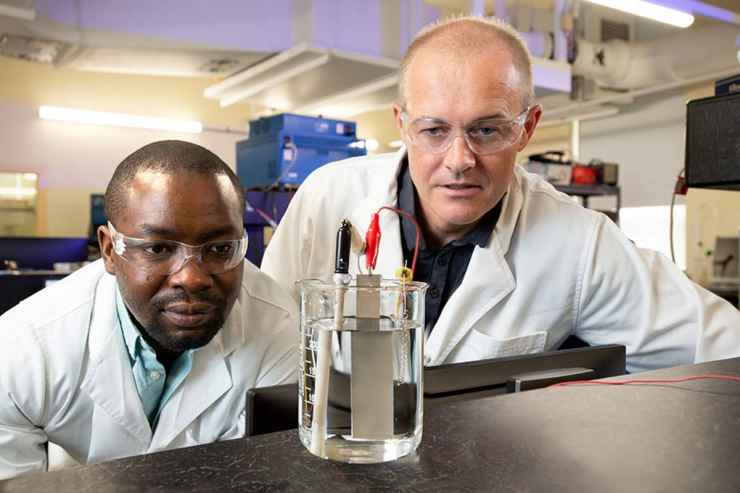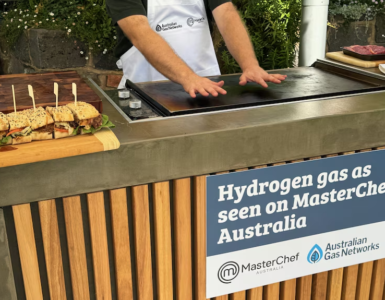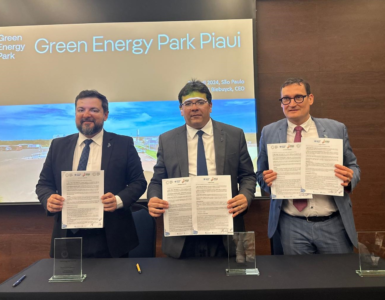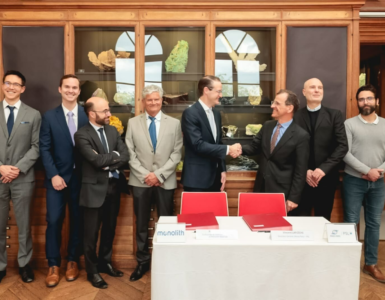Carbon capture process produces hydrogen and construction materials. QUT scientists have developed a process to capture carbon dioxide from the air into water and store it as non-toxic calcium carbonate (chalk), a key ingredient for cement production and other products, all potentially powered by solar or wind energy.
PhD researcher Olawale Oloye and Professor Anthony O’Mullane from the Centre for Materials Science, and the Centre for Clean Energy Technologies and Practices developed the electrochemical capture and conversion of carbon dioxide process which also generates hydrogen and a host of useable by-products.
Professor O’Mullane said.
“This process involves the capture of CO2 by its reaction with an alkaline solution produced on demand, to form solid carbonate products which can be used, for example, as construction materials, thereby keeping carbon dioxide out of the atmosphere.
“This can be done using a simple calcium source in water. To further improve efficiency, we added a low-toxicity, biodegradable chemical called MEA to increase the amount of CO2 drawn out of the atmosphere and into the water.”
🔥 What about we co-host a webinar? Let's educate, captivate, and convert the hydrogen economy!
Hydrogen Central is the global go-to online magazine for the hydrogen economy, we can help you host impactful webinars that become a global reference on your topic and are an evergreen source of leads. Click here to request more details
“Next, the hydrogen evolution reaction during electrolysis ensured that the electrode was continually renewed to keep the electrochemical reaction going while also generating another valuable product, green hydrogen.”
“This means if this electrolysis process is powered by renewable electricity, we are producing green hydrogen alongside the calcium carbonate (CaCO3).”
Professor O’Mullane said the use of renewable energy to capture CO2 and create calcium carbonate may be of use in the cement industry, which has a significant CO2 footprint.
“We envision this technology would benefit emission-intensive industries such as the cement industry whose CO2 footprint is 7 to 10 per cent of anthropogenic CO2 emissions due to the initial clinking (heating) step that converts CaCO3 into CaO (lime) with the emission of large amounts of CO2.”
“By coupling the mineralization process to produce CaCO3 from the emitted CO2 during the clinking step we could create a closed loop system and reduce a significant percentage of the CO2 involved in cement production.”
- Proof of concept: electrochemical process captures atmospheric carbon dioxide and stores it in water as chalk while also producing green hydrogen
- Process could be powered by solar or wind energy
- Cement industry generates 7 per cent of world’s carbon dioxide
- Process could provide cement industry with “green” key ingredient to reduce its CO2 footprint.
- The mineralisation process produces other construction industry products.
Carbon capture process produces hydrogen and construction materials, March 25, 2021








